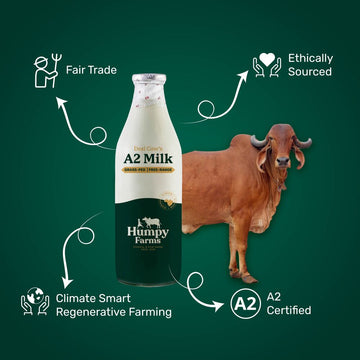Starting an A2 milk business can be a rewarding venture, especially given the growing consumer interest in health and wellness. Here’s a step-by-step guide to help you get started and develop a successful business:
Step 1: Research and Understand A2 Milk
- Understand A2 Milk: A2 milk comes from cows that produce only the A2 beta-casein protein, which some people find easier to digest than A1 milk.
- Market Research: Analyze consumer demand, competition, and pricing in your target market. Look into health benefits and any misconceptions.
Step 2: Develop a Business Plan
- Executive Summary: Outline your business vision and goals.
- Market Analysis: Summarize your research on the A2 milk market.
- Operations Plan: Detail how you will source, produce, and distribute your product.
- Financial Projections: Include startup costs, pricing strategies, revenue forecasts, and break-even analysis.
Step 3: Legal and Regulatory Compliance
- Business Structure: Decide whether to form an LLC, corporation, or another structure.
- Licensing and Permits: Obtain necessary permits for dairy farming, processing, and selling milk.
- Health Regulations: Familiarize yourself with food safety standards and regulations governing dairy products.
Step 4: Source Your Cows
- Breeding: Acquire cows that produce A2 milk. Consider working with a reputable breeder.
- Testing: Have cows tested for their beta-casein protein type to ensure they produce A2 milk.
Step 5: Set Up Your Operations
- Farm Setup: Create a suitable environment for the cows, ensuring good living conditions and health management.
- Processing Facility: If you plan to process the milk, invest in a facility that meets health regulations.
- Quality Control: Establish protocols to ensure high product quality.
Step 6: Branding and Marketing
- Brand Development: Create a brand that resonates with health-conscious consumers. Emphasize the benefits of A2 milk.
- Marketing Strategy: Utilize social media, influencer partnerships, and local events to raise awareness. Consider educational campaigns to inform consumers.
- Packaging: Invest in appealing and eco-friendly packaging.
Step 7: Distribution
- Direct Sales: Consider selling directly to consumers through farmers' markets or a subscription service.
- Retail Partnerships: Approach local grocery stores and health food shops to carry your product.
- Online Sales: Set up an e-commerce platform to reach a broader audience.
Step 8: Build Customer Loyalty
- Quality Assurance: Maintain consistent product quality and customer service.
- Engagement: Engage with customers through social media, newsletters, and loyalty programs.
- Feedback: Solicit and act on customer feedback to improve your offerings.
Step 9: Scale Your Business
- Expansion: Once established, consider expanding your product line to include flavored A2 milk, yogurt, or cheese.
- Increase Distribution: Look for larger retailers or regional markets to grow your reach.
Step 10: Monitor and Adapt
- Performance Tracking: Regularly assess your business performance using KPIs.
- Stay Informed: Keep up with industry trends and consumer preferences to adapt your business strategy accordingly.
Additional Tips
- Networking: Join industry associations and attend trade shows to build connections.
- Sustainability: Consider environmentally friendly practices to appeal to eco-conscious consumers.
Calculating the investment and ROI (Return on Investment) for an A2 milk business involves several factors, including initial startup costs, ongoing expenses, revenue projections, and timeframes for achieving profitability. Here’s a simplified approach:
1. Initial Investment Costs
A. Startup Costs
- Land and Facilities: $50,000 - $200,000 (depends on location and size)
- Cattle Purchase: $1,500 - $3,000 per cow (e.g., 20 cows = $30,000 - $60,000)
- Equipment: Milking machines, storage tanks, processing equipment: $20,000 - $50,000
- Licensing and Permits: $5,000 - $10,000
- Initial Feed and Health Supplies: $5,000 - $10,000
- Marketing and Branding: $5,000 - $15,000
- Miscellaneous: $5,000 - $10,000
Total Estimated Startup Costs: $120,000 - $400,000
2. Ongoing Costs (Annual)
- Feed and Care: $20,000 - $50,000
- Labor: $30,000 - $60,000 (if hiring staff)
- Utilities and Maintenance: $5,000 - $15,000
- Marketing and Sales: $5,000 - $10,000
- Insurance: $2,000 - $5,000
Total Estimated Ongoing Annual Costs: $62,000 - $140,000
3. Revenue Projections
Production Capacity:
- Average yield per cow: 6-8 gallons/day.
- For 20 cows: 120 - 160 gallons/day.
Annual Production:
- 120 gallons/day × 365 days = 43,800 gallons/year
- 160 gallons/day × 365 days = 58,400 gallons/year
Selling Price:
- Average price per gallon of A2 milk: $6 - $8.
Annual Revenue Projections:
- Low Estimate: 43,800 gallons × $6 = $262,800
- High Estimate: 58,400 gallons × $8 = $467,200
4. ROI Calculation
ROI Formula:
Net Profit Calculation:
Low Estimate:
- Revenue: $262,800
- Costs: $62,000 (assuming minimal ongoing costs)
- Profit: $262,800 - $62,000 = $200,800
High Estimate:
- Revenue: $467,200
- Costs: $140,000 (assuming higher ongoing costs)
- Profit: $467,200 - $140,000 = $327,200
Total Investment:
- Initial Investment (average): $260,000 (midpoint of the startup costs)
ROI Calculation
Low Estimate:
High Estimate:
Summary
- Initial Investment: $120,000 - $400,000
- Annual Ongoing Costs: $62,000 - $140,000
- Annual Revenue: $262,800 - $467,200
- Net Profit: $200,800 - $327,200
- ROI: Approximately 77.3% - 125.0%
Final Considerations
- ROI can vary significantly based on efficiency, market conditions, and demand.
- It’s crucial to have a buffer for unexpected costs and market fluctuations.
- Regularly review and adapt your business strategy based on performance and feedback.




Social Plugin